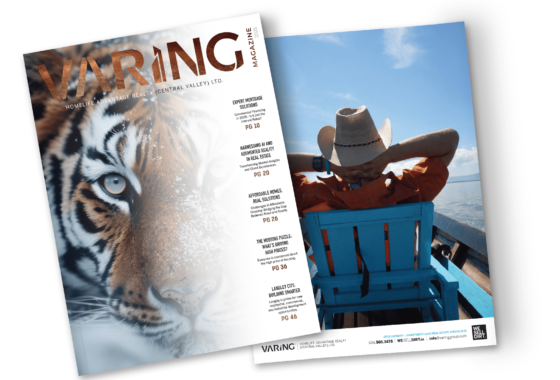PRINCIPAL RESIDENCE TAX TIPS
One of the largest tax breaks Canadians have is the ability to claim the principal residence exemption ("PRE") on the sale of their homes. The principal residence exemption provides a homeowner with an exemption from tax on the capital gain realized when they sell the property that they have designated as their principal residence.
DOES THE EXEMPTION REALLY APPLY?
In most situations, individuals buy and sell their personal homes without any consideration of the possible effect income taxes may have on the profit realized on the sale.
For many individuals, a large portion of their personal wealth may be vested in their home which has a large accrued gain.
If you have recently sold or are considering the sale of your home, you need to assess if the PRE really applies to exempt the sale of your Principal Residence (“PR”) from income tax.
The answer is not always as straightforward as you might think.
DOES THE SALE MEET THE REQUIREMENTS FOR THE PRE?
For most situations, your answer to the following questions will determine whether you meet the technical requirements for claiming the PRE in Canada.
1. Have you been a resident in Canada for the entire period that you owned your property?
2. Is the land you own greater than one-half hectare or 1.2 acres in size?
3. Do you own another property, such as a vacation or recreational property?
4. Have you ever rented out a portion of adjoining land and buildings on the property?
5. Have you ever used the property in the course of earning income from a business or farming operation?
6. Do you and your spouse (or common-law partner) own separate properties?
Depending on your answers, the principal residence exemption may, or may not, apply to the tax-free sale of your home. It all depends on your specific situation.
DESIGNATION OF A PROPERTY AS YOUR PRINCIPAL RESIDENCE (“PR”)
For a property to be your PR for a particular year, you must designate it as such for the year, and no other property may have been so designated by you for the year.
Furthermore, no other property may have been designated as the PR of any member of your family unit for the year. For purposes of the latter rule, which applies for 1982 and subsequent years, a family unit is you, your spouse (or common-law partner), and any children under the age of 18.
For 2016 and later tax years, you can only utilize the PRE if the sale is reported and a designation of PR is made in your tax return for the year of sale. If the disposition is not reported or you forget to file the designation, the full amount of the capital gain will be taxable.
HOW IS THE PRINCIPAL RESIDENCE EXEMPTION CALCULATED?
The mechanism for sheltering the capital gain realized on the sale of a home from personal income tax is based on a formula provided in the Income Tax Act of Canada. The exempt portion of the capital gain is calculated by using the following formula:
A × (B ÷ C)
The variables in the above formula are as follows:
A is the taxpayer’s capital gain otherwise determined
B is:
• if the taxpayer was resident in Canada during the year that includes the acquisition date, 1 + the number of tax years ending after the acquisition date for which the property was the taxpayer’s principal residence and during which he or she was resident in Canada; or
• if the taxpayer was not resident in Canada during the year that includes the acquisition date, the number of tax years ending after the acquisition date for which the property was the taxpayer’s principal residence and
C is the number of tax years ending after the acquisition date during which the taxpayer-owned the property
(whether jointly with another person or otherwise).
YOU MUST ORDINARILY INHABIT THE HOME
For income tax purposes, there is no minimum period for which you must own or inhabit the property for it to qualify as your PR. From the Canada Revenue Agency (“CRA’s”) perspective, a home would qualify as a PR if you and your family “ordinarily inhabited” the dwelling during the calendar year.
However, the CRA will look at all circumstances during the period of ownership including the length of time in the dwelling, your primary income sources, and patterns of buying, living, moving and selling to determine if, in fact, the home is an eligible PR or is part of a business pattern to earn money off of real estate flipping.
LAND IN EXCESS OF ONE-HALF HECTARE OR 1.2 ACRES
Where the total area of the land upon which your home is situated exceeds one-half hectare, the excess land is deemed not to have contributed to the use and enjoyment of your home. In this situation, the excess land will not qualify as part of a principal residence, except to the extent that you can establish that it was necessary for such use and enjoyment.
The excess land must clearly be necessary for the home to properly fulfill its function as a residence and not simply be desirable. Generally, the use of land in excess of one-half hectare in connection with a particular recreation or lifestyle (such as for keeping pets or for country living) does not mean that the excess land is necessary for the use and enjoyment of the housing unit as a residence.
Land in excess of one-half hectare may be considered necessary where the size or character of a home together with its location on the lot make such excess land essential to its use and enjoyment as a residence, or where the home’s location requires the excess land to provide access to and from public roads. Other factors may also be relevant in determining whether excess land is necessary for the use, such as a minimum lot size or a severance or subdivision restriction. In all cases, however, it is a question of fact as to how much, if any, of the excess land is necessary for the use and enjoyment of the home as your residence.
IF YOU OWN MORE THAN ONE PROPERTY YOU HAVE CHOICES
Here’s the advantage: You can claim any property you own and “ordinarily inhabit” as your principal residence. As a result, you have the choice of designating a seasonal residence such as a vacation property as your principal residence. Just keep in mind that the occupancy requirement must be met for each year that you want to make the designation.
Note that a seasonal residence, such as a cottage, cabin, or ski chalet can be considered to be “ordinarily inhabited in the year” even if you only use it during vacation periods “provided that the main reason for owning the property is not to gain or produce income.”
For families with more than one property, you need to consider how you should designate each property as your principal residence in order to maximize the exemption and minimize the amount of tax owed on each property.
PRINCIPAL RESIDENCE ON LAND USED IN A BUSINESS OR FARMING OPERATION
If you sell property and a portion of the land has been used in a business or a farming operation, the gain realized on the business or farm use portion of the land will not generally qualify for the PRE.
For example, if you bought a 10-acre farm property and lived in the farmhouse, you would not have to pay tax on the appreciated value of the farmhouse or on 1.2 acres of the land because that portion would quality for the PRE. However, you would have to pay capital gains tax on the appreciated value on the adjoining 8.8 acres of land and related business use structures on that portion of the property.
YOU CANNOT EARN INCOME FROM THE PROPERTY
Have you used your property to earn income? If so, you may not be able to exempt the profit from capital gains tax. Under the CRA’s rules, a property cannot be considered a primary residence if it’s overall aim was to earn an income. For instance, if you purchased a duplex and lived in one side, while renting out the other, you cannot shelter the capital gains earned on that rental property portion.
The popularity of creating detached secondary dwellings has continued to grow, considering many circumstances. Coach or carriage houses as secondary separate living spaces are typically rented out to supplement the cost of living but are also used to keep aging parents or disabled adult children independent yet close, or to assist adult children who cannot afford to purchase their own home.
The PRE is only available to a family for one housing unit in any year. Despite both homes being on the same title and on the same land which cannot be subdivided, the introduction of a self-contained secondary home with its own entrance and separate electrical, plumbing and heating systems brings into question the ownership of more than one housing unit.
CLOSING THOUGHTS
The principal residence exemption is often an after-thought for most Canadians who buy a house, live in it, sell it, and claim the exemption. The incidence of taxation arising on the gain realized is generally not an issue in most situations. However, as outlined above, it can get very complicated to determine your eligibility to claim the exemption and how to effectively use the exemption to minimize income taxes payable on the sale of your residence.
Rick Gendemann, CPA, CA // Partner with Manning Elliott LLP. 
Rick has developed an extensive background providing accounting, tax, business advisory, estate, and succession planning services for privately-held businesses. His practice focuses on businesses operating in the manufacturing and food processing, agriculture, real estate development, wholesale, distribution, and R&D industry sectors. Rick’s practice also includes a focus on delivering income tax consulting and tax planning services to owner-managed businesses and their shareholders.
Rick can be reached at (604) 557-5760 or [email protected].
The above content is believed to be accurate as of the date of posting. Canadian tax laws are complex and are subject to frequent changes. Professional tax advice should be sought before implementing any tax planning. Manning Elliott LLP cannot accept any liability for the tax consequences that may result from acting based on the information contained herein.
View additional articles about the real estate market in the Varing Magazine


